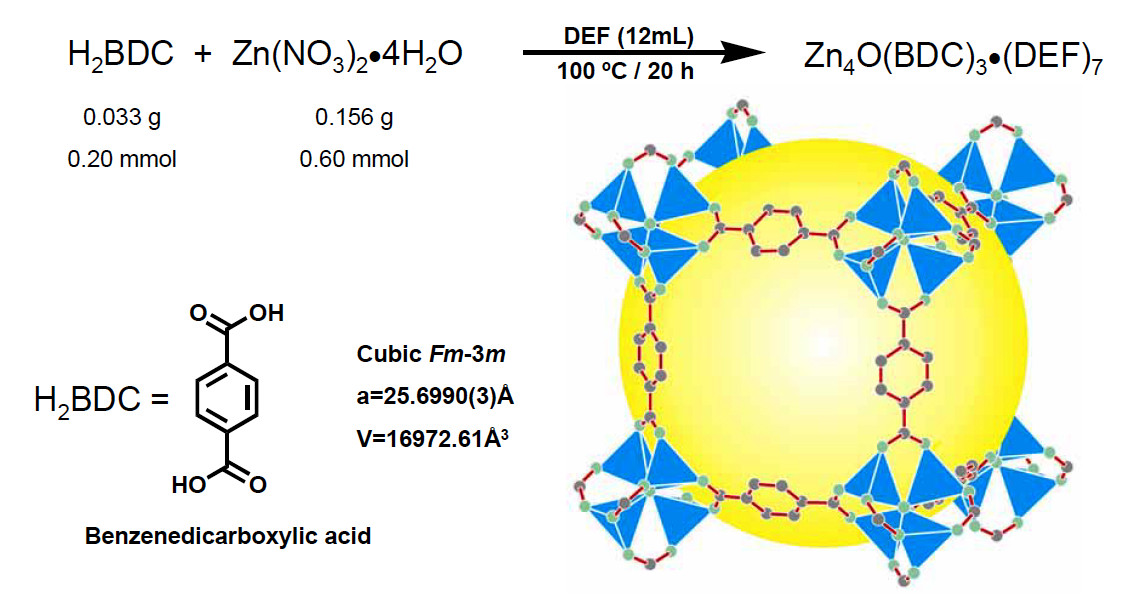Porous crystals called metal-organic frameworks, with their nanoscopic pores and incredibly high surface areas, are excellent materials for natural gas storage. But with millions of different structures possible, where does one focus?
A Northwestern University research team has developed a computational method that can save scientists and engineers valuable time in the discovery process. The new algorithm automatically generates and tests hypothetical metal-organic frameworks (MOFs), rapidly zeroing in on the most promising structures. These MOFs then can be synthesized and tested in the lab.
Using their method, the researchers quickly identified more than 300 different MOFs that are predicted to be better than any known material for methane (natural gas) storage. The researchers then synthesized one of the promising materials and found it beat the U.S. Department of Energy (DOE) natural gas storage target by 10 percent.
There already are 13 million vehicles on the road worldwide today that run on natural gas -- including many buses in the U.S. -- and this number is expected to increase sharply due to recent discoveries of natural gas reserves.

Synthesis and Structure of IRMOF-1 IRMOF ≡ Isoreticular Metal Organic Framework
In addition to gas storage and vehicles that burn cleaner fuel, MOFs may lead to better drug-delivery, chemical sensors, carbon capture materials and catalysts. MOF candidates for these applications could be analyzed efficiently using the Northwestern method.
"When our understanding of materials synthesis approaches the point where we are able to make almost any material, the question arises: Which materials should we synthesize?" said Randall Q. Snurr, professor of chemical and biological engineering in the McCormick School of Engineering and Applied Science. Snurr led the research. "This paper presents a powerful method for answering this question for metal-organic frameworks, a new class of highly versatile materials."
The study will be published Nov. 6 by the journal Nature Chemistry. It also will appear as the cover story in the February print issue of the journal.
Christopher E. Wilmer, a graduate student in Snurr's lab and first author of the paper, developed the new algorithm; Omar K. Farha, research associate professor of chemistry in the Weinberg College of Arts and Sciences, and Joseph T. Hupp, professor of chemistry, led the synthesis efforts.
"Currently, researchers choose to create new materials based on their imagining how the atomic structures might look," Wilmer said. "The algorithm greatly accelerates this process by carrying out such 'thought experiments' on supercomputers."
The researchers were able to determine which of the millions of possible MOFs from a given library of 102 chemical building block components were the most promising candidates for natural-gas storage. In just 72 hours, the researchers generated more than 137,000 hypothetical MOF structures. This number is much larger than the total number of MOFs reported to date by all researchers combined (approximately 10,000 MOFs). The Northwestern team then winnowed that number down to the 300 most promising candidates for high-pressure, room-temperature methane storage.
In synthesizing the natural-gas storage MOF that beat the DOE storage target by 10 percent, the research team showed experimentally that the material's actual performance agreed with the predicted properties.
The new algorithm combines the chemical "intuition" that chemists use to imagine novel MOFs with sophisticated molecular simulations to evaluate MOFs for their efficacy in different applications. The algorithm could help remove the bottleneck in the discovery process, the researchers said.
###
The title of the paper is "Large-Scale Screening of Hypothetical Metal-Organic Frameworks." In addition to Snurr, Hupp, Wilmer and Farha, other authors are Michael Leaf, Chang Yeon Lee and Brad G. Hauser, all from Northwestern.
Contact: Megan Fellman fellman@northwestern.edu 847-491-3115 Northwestern University
IMAGE CREDIT in PDF FORMAT: The Design of Metal Organic Frameworks for the Separation of Carbon Dioxide From Flue Gas and Gasification Streams
